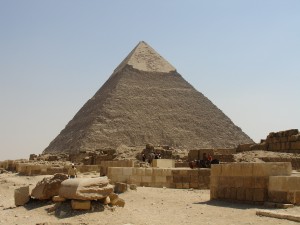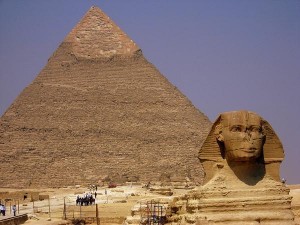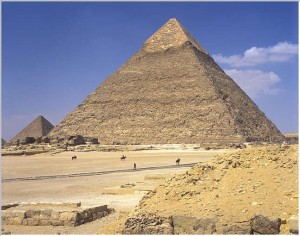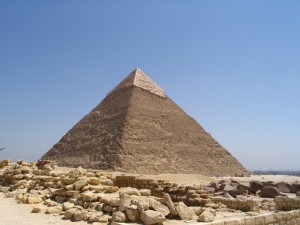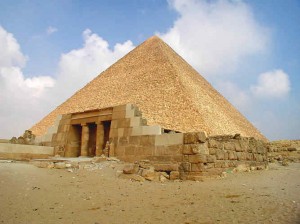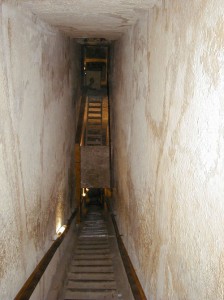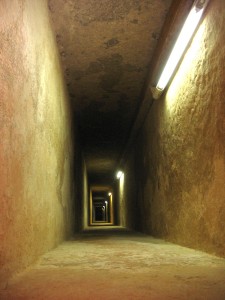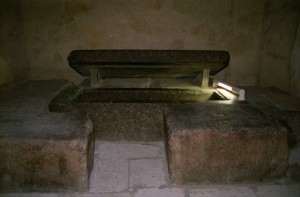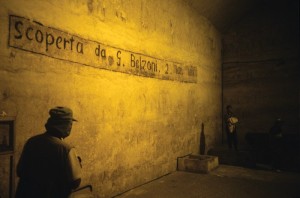Written by Soudip
October 18th 2014You Are Here
Home > Egypt > Great Pyramid of Giza Historical Facts and PicturesPyramid of Khafre Historical Facts and Pictures
The Pyramid of Khafre, also known as the pyramid of Chephren, is the second largest as well as the second tallest pyramid in the Giza Necropolis. It is the tomb of the Fourth-Dynasty pharaoh Khafre, who is also the son of Khufu. With a base of 215.5 m, the pyramid rises to 136.4 m in height. The pyramid was built by limestone blocks and fragments of its original casing are still visible at the top. The slope of the pyramid is slightly steeper than the nearby Pyramid of Khufu. The 10 m high bedrock of the Pyramid of Khafre shows it to be taller than Khufu’s pyramid.
Structure of Pyramid of Khafre
The core of the pyramid displays a rock-cut outcropping like the Great Pyramid. The bottom of the pyramid is built of large stones, but the stones gradually become smaller as the structure reaches the apex. The entire pyramid was cased in Tura limestone, except the bottom, which was cased in pink granite.
Pyramid of Khafre Entrance
Interior of Pyramid of Khafre
There are two chambers contained within the pyramid, along with two entrances that lead to the burial chamber. The lower passageway, adjoined to the lower entrance, is completely carved out of the bedrock. The higher chamber is situated 11.54 m above the ground level. The rectangular-shaped burial chamber is engraved out of a pit in the bedrock; however, the roof of the chamber is created out of gabled limestone beams. Partially sunk in the floor, the sarcophagus of Khafre was engraved out of a solid granite block.
According to Arabian historian Ibn Abd al-Salam’s records, the pyramid was opened in 1372 BC. Most of its valuable structural components were stolen during the First Intermediate Period. The overseer of temple, during the Eighteenth Dynasty, robbed its casing stones to construct a temple on Heliopolis. On March 2, 1818, Giovanni Belzoni was the first to explore the pyramid in modern times. He discovered that the burial chamber had been already visited by intruders before and found it to be empty. Later in 1858, Auguste Mariette discovered a diorite statue while partially excavating the site.





